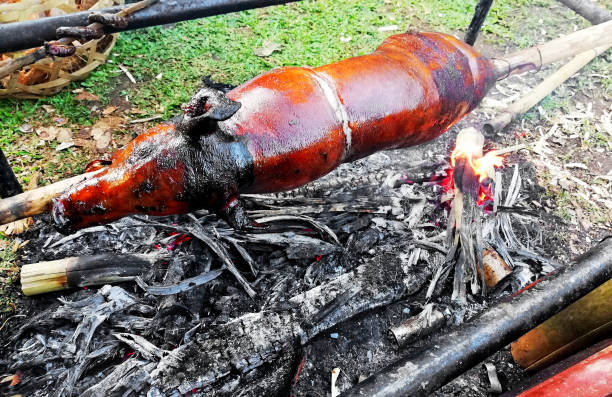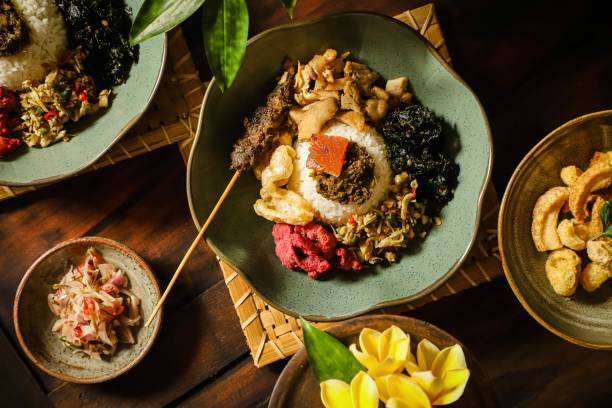Babi guling is a traditional dish from the Indonesian island of Bali. That has been enjoyed by locals and visitors alike for centuries. This savory dish is made from slow-roasted suckling pig stuffed with a mixture of spices and served with steamed rice. Considered one of the most iconic foods of Bali and a symbol of the island’s rich cultural heritage. In this article, we’ll delve into the history and cultural significance of babi guling and explore why it remains such a beloved dish in Bali today.

History of Babi Guling
Babi guling, also known as suckling pig, has been a staple of Balinese cuisine for generations. It is believed to have originated in the 19th century. When Balinese communities would prepare the dish for important religious ceremonies and celebrations. The pig was considered a symbol of prosperity and abundance. Was cooked in large quantities to feed the entire community.
Over time, babi guling evolved into a more elaborate dish. Various spices and ingredients added to the stuffing mixture to enhance its flavor. Today, babi guling is enjoyed not only for its taste, but also for its cultural and historical significance.
The Making of Babi Guling
Making babi guling is a complex and time-consuming process that requires skill and expertise. The pig is stuffed with a mixture of spices, such as turmeric, ginger, garlic, and shallots, and then slow-roasted over a wood fire for several hours. The result is a tender, juicy, and flavorful, succulent, and aromatic meat.
One of the key ingredients in babi guling is the spice mixture, which is carefully selected and blended to create the dish’s unique flavor. The spices used can vary from region to region, but turmeric and ginger are typically the most dominant. The stuffing mixture is carefully prepared and placed inside the pig, which is then sewn closed and secured with bamboo skewers.
Cultural Significance of Babi Guling
Babi guling is more than just a delicious dish in Bali. It is a cultural icon representing the island’s rich history and heritage. In Bali, babi guling is often served during important ceremonies and celebration. Such as weddings and religious festivals, where it is shared among family and friends.

The dish is also a symbol of Balinese hospitality, and is often served to visitors and guests as a way of welcoming them to the island. Many tourists flock to Bali to try babi guling, which is considered a rite of passage for foodies visiting the island.
In conclusion, babi guling is a dish that generations of Balinese have enjoyed. Remains one of the most iconic foods of the island. Its rich history, cultural significance, and delicious flavor make it a must-try for anyone visiting Bali. Whether you are a foodie, a history buff, or simply looking for a taste of traditional Balinese cuisine, babi guling is an experience you won’t miss.